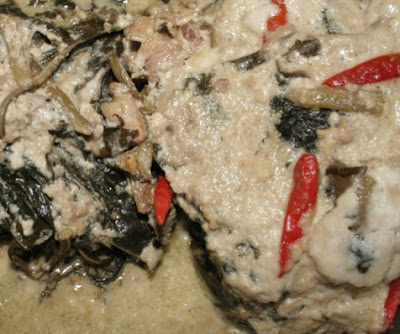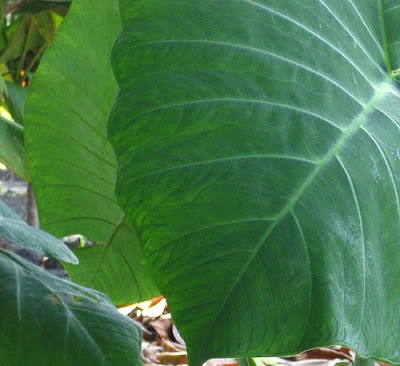What makes “Pinangat “ or Laing Special?

Yesterday, I came across an article in PDI about the famous native delicacy of Bicolanos, particularly the Camalignons, becoming a lucrative business nowadays – the Pinangat.
The article brings back my childhood memory in my hometown in Legazpi.
“Natong” or laing/gabi (Manila) or the taro leaves (Alocasia macrorrhiza) are abundantly growing in every household’s backyards, riverbanks and swamp areas in our place, but we, Bicolanos know the best variety. We won’t settle for those plants that grow elsewhere. This skill of knowing if a particular natong leaf or a batch of it would be good for cooking, or not, makes the difference. No doubt, if you plan to visit during meal time, you will certainly see delicious “laing” serve in our table. You would come back raving about it.
But how we, the Oragons, made this dish so special?
I was 9 when I learned to cook.
My mother would always insist that we should watch her cook and help prepare the food every night. Even as a kid, I have always been fascinated watching my mother prepare this special dish. Although we hired a “katulong”, she made sure that she spent time cooking for us. My sister will prepare the “natong” or laing and I was in charge of flaking, cracking and grating the coconut manually in a “kudkudan”. And I was sure the flavor is well worth all the tedious effort.
It took her less than an hour to cook sumptuous” laing” dish. When it was almost done, she set aside half of it from the pot (for us) and then put “sambalas” (siling labuyo) to the remaining half while still on fire, for her and my father.
She cooked pinangat in a palayok and firewood because according to her, it gives a better and more inviting smell. You must have a palayok or earthen pot in order to cook pinangat, otherwise it won’t taste as good as what my mother tells me.
"Natong" or Gabi/Taro Leaves (Alocasia macrorrhiza)
There are two ways of cooking the laing – “palu-sag” and the classic way.
In “palusag”, you put all the ingredients (natong, onion, garlic, orabang, pork, dried fish, etc) and bring to boil, while the classic way, you have to boil the coconut milk until it thickens (with the other ingredients (garlic, ginger, onions, dried fish, pork), then later the shredded “natong” leaves and “orabang” on top of it.
The cooking takes some secrets and techniques in order not to produce itchiness on the tongue and throat after eating. Here are some:
1. Choose the right variety of natong – best kind is the heart-shaped, light greenish leaves, smooth top layer, with soft clear stem.
2. Wash the natong leaves immediately.
3. Split the leaves by following the large veins, don’t use a knife. Don’t wash after.
4. In the classic way, stir constantly the coconut milk until it boils. Stop stirring when you add already the “natong” to avoid itchy result. Press it on top and side to side from time to time to avoid sticking to the pot.
5. When the natong is done, add the “kakang-gata” (first squeeze coconut milk) on top and cook in low fire for 15 minutes.
Pinangat is a special kind of cooking the “natong”. The only difference from the natural way of cooking is the appearance (the shredded leaves and ingredients are wrapped in a whole leaf and tied) and its added ingredients like crab meat, chopped shrimps and pork fat. It is different from Pinangat of Batangas.















1 comment:
the only time i tasted that was when i visited manila..
there's no such dish in cebu..
maybe there is.. on specialty restaurants.. hhe
Post a Comment